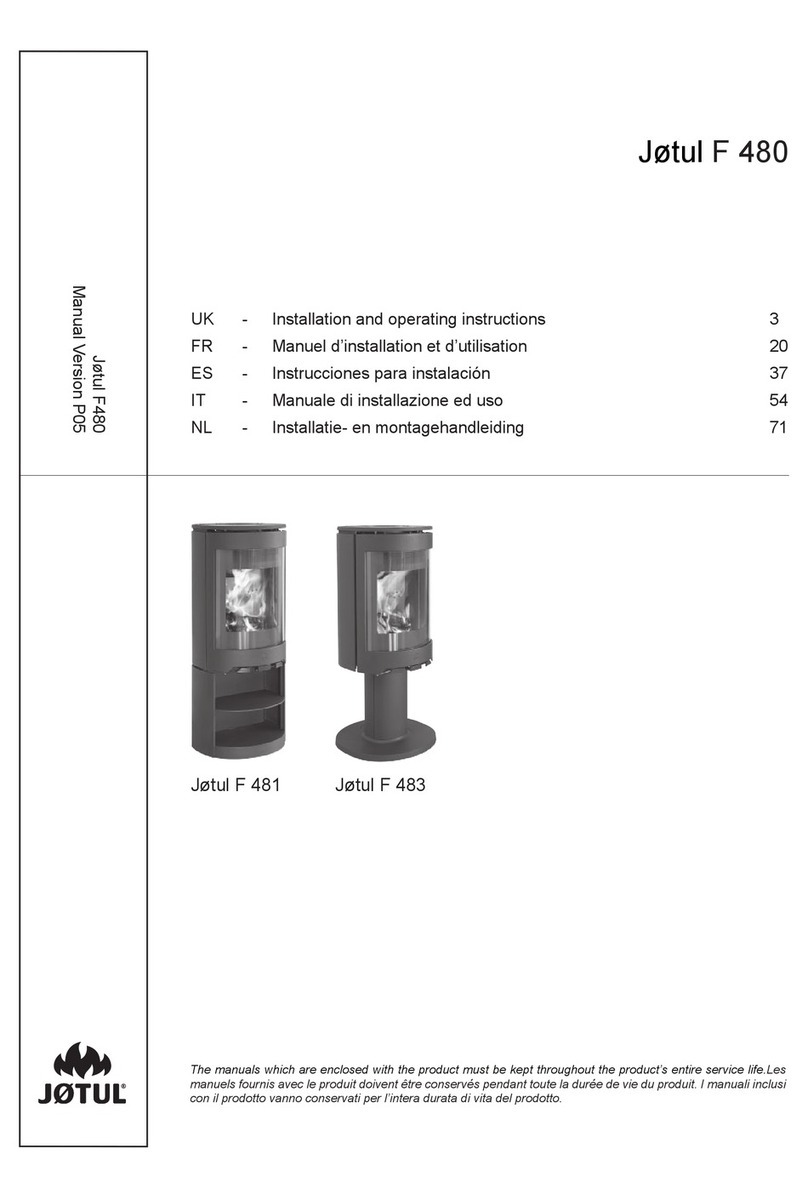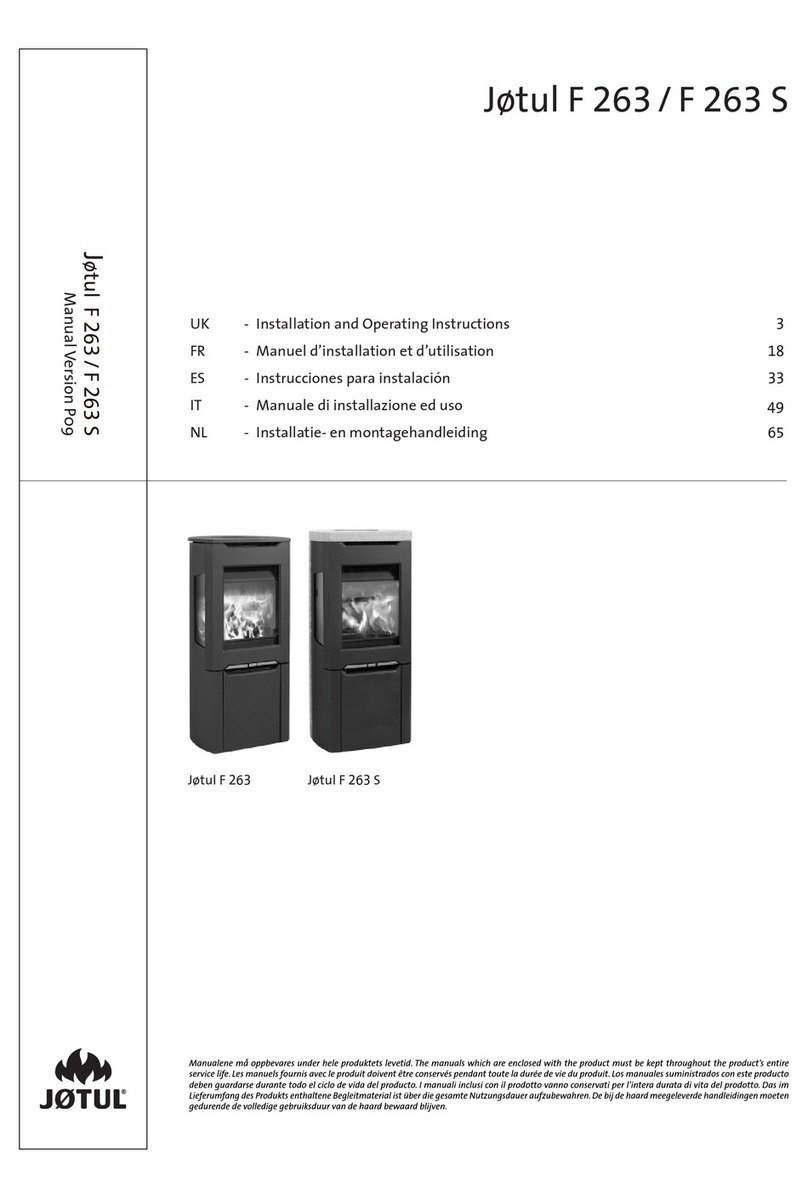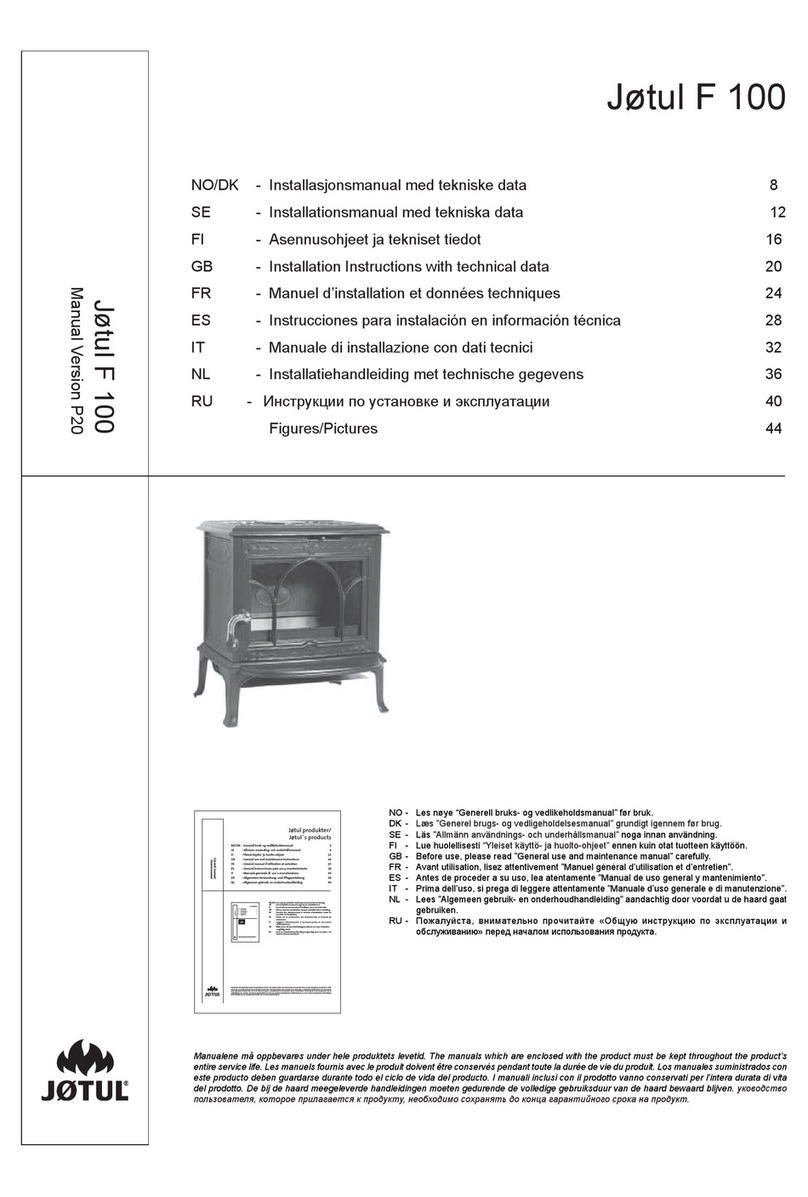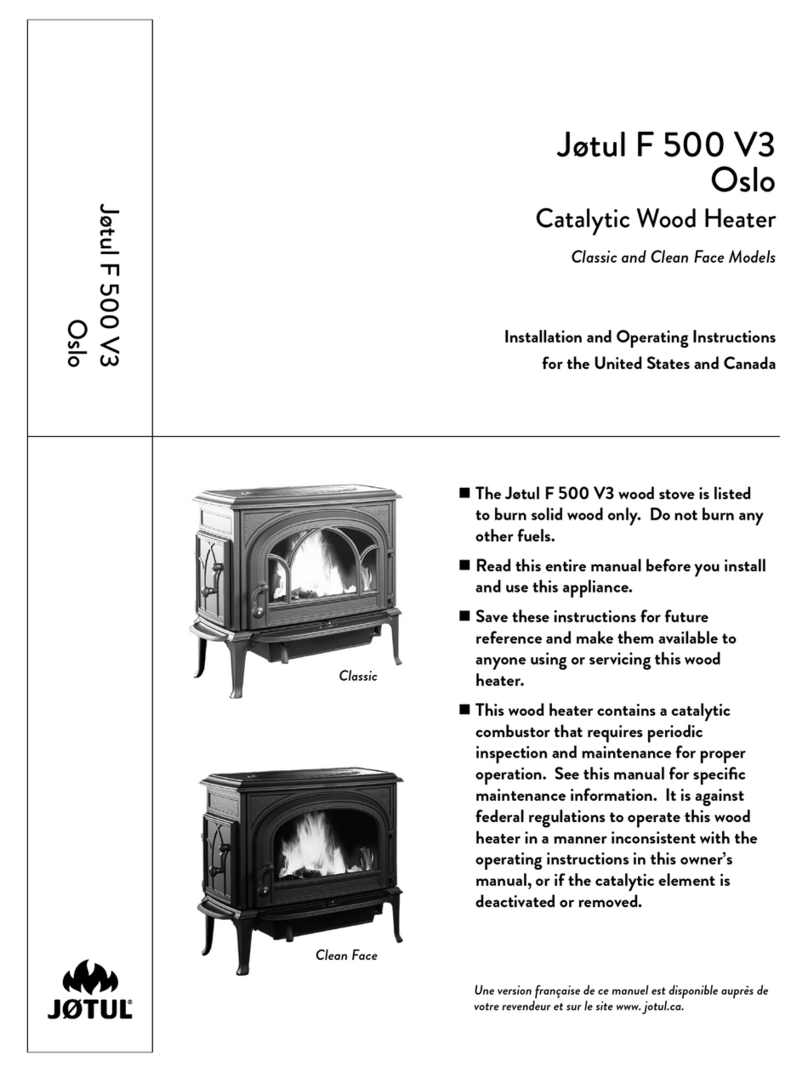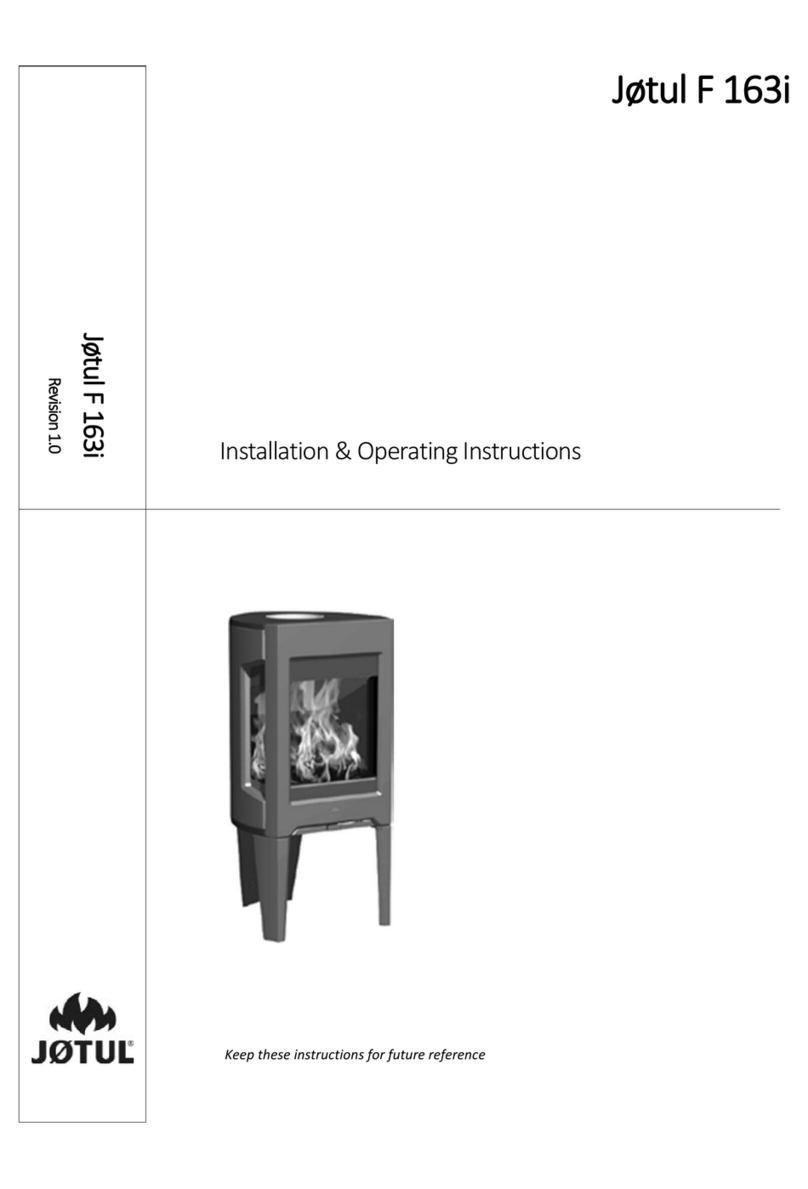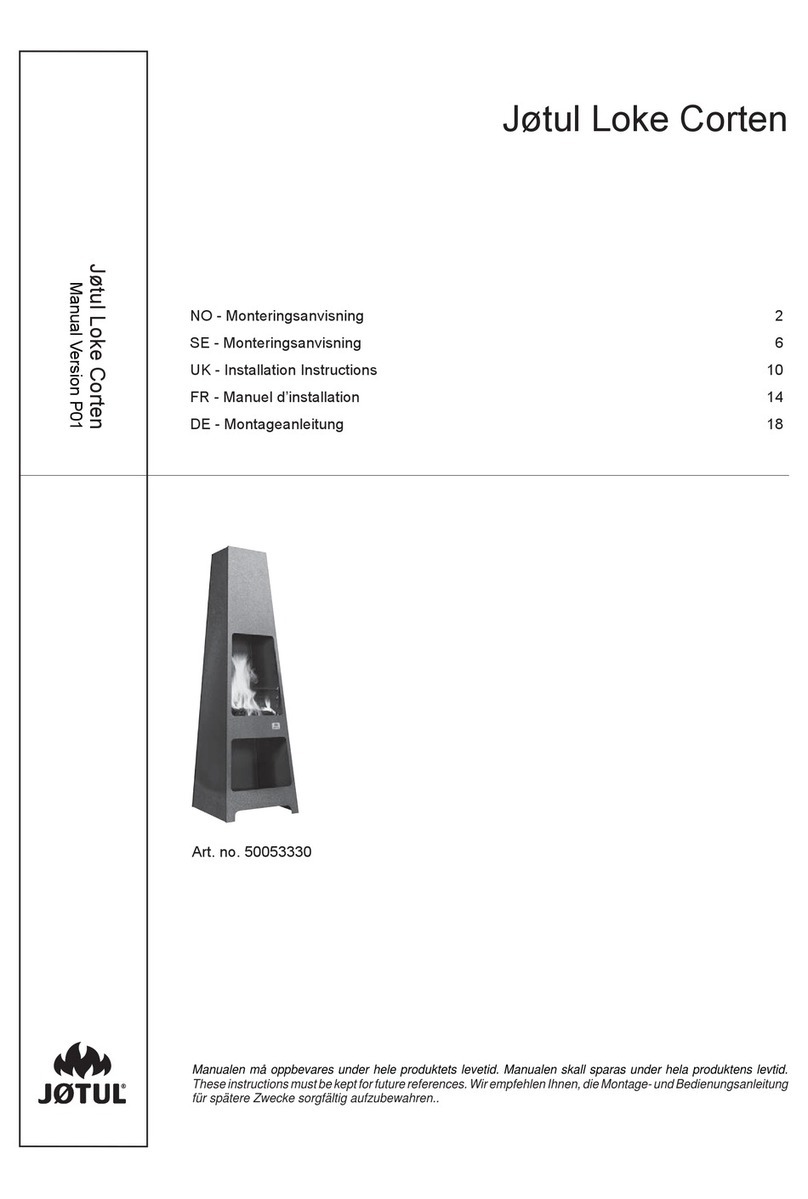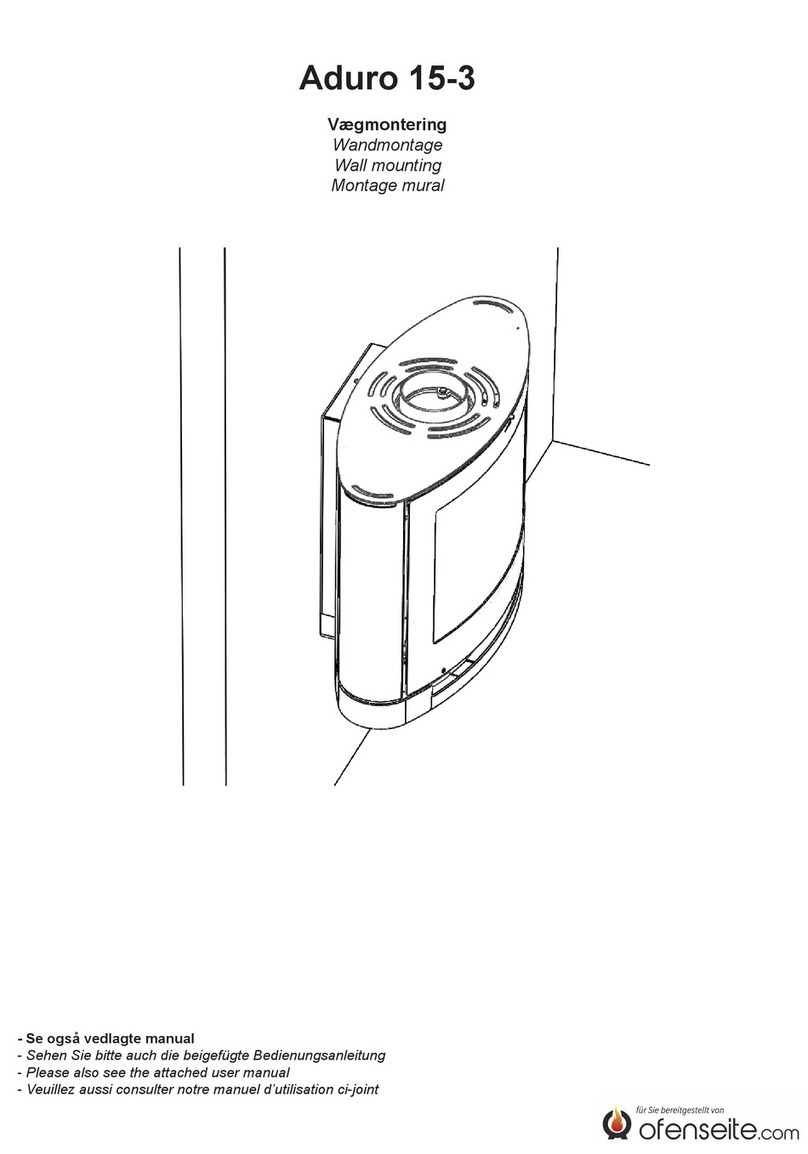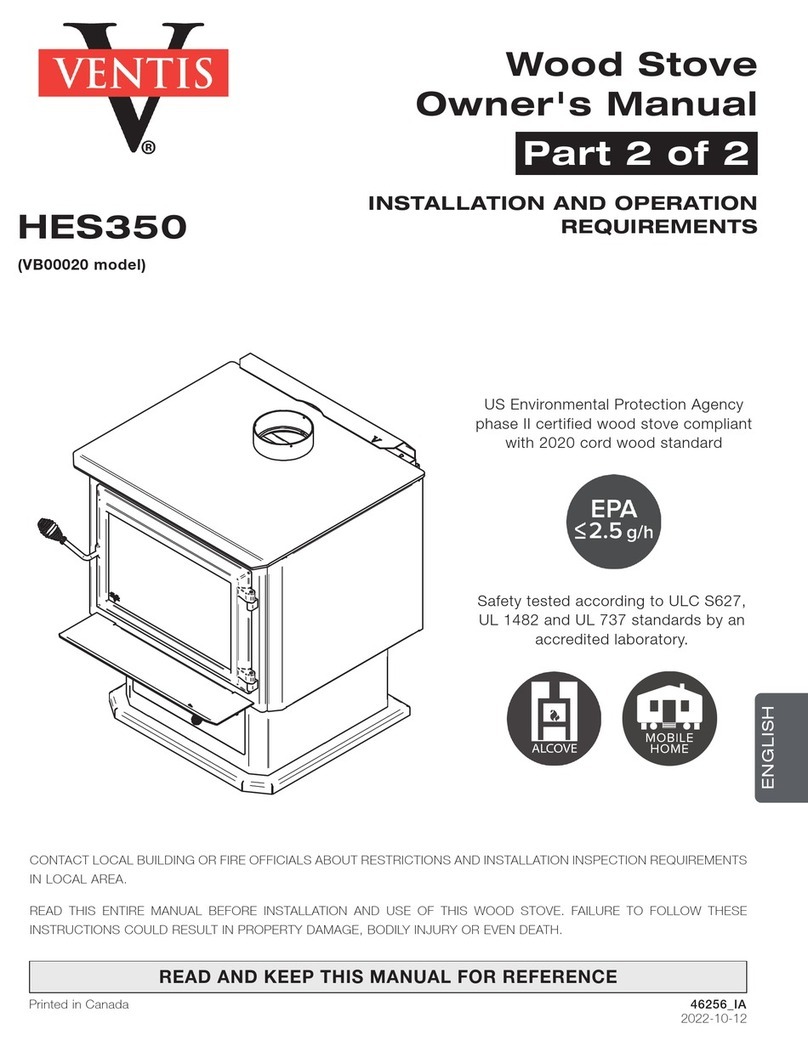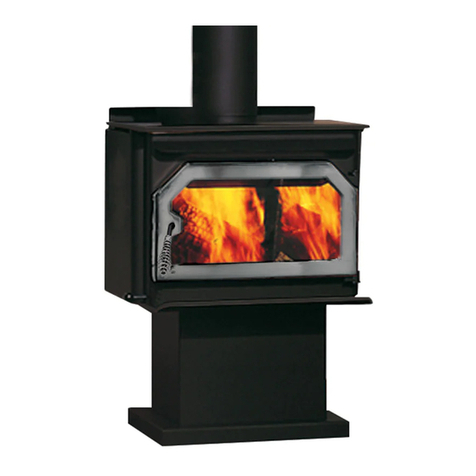
5
Mobile Home Installation
The F 45 V2 Greenville ais pproved for
installation into mobile homes in the
United States and Canada.The F 500 V3
Oslo is approved for the United States.
Consult the specific owners manual for
more details.
• The stove must be secured to the
floor of the mobile home. Use
the following Floor Bracket Kit
depending upon the model:
F45 V2 - Floor Bracket Kit 157321
F500 V3- Floor Bracket Kit, Long Leg
(8”) 750304
• Use the following Outside Air Kit
to provide outside combustion air
depending upon the model:
F45 V2 - Outside Air Kit 157637
F500 V3 - Outside Air Adapter 154333
• Use only listed double-wall pipe for
the chimney connection.
• The stove must be grounded to the
mobile home chassis.
• The stove must otherwise be
installed in accordance with 24CRR,
Part 3280 (HUD).
Consult your local building inspector
or fire officials about restrictions and
requirements in your area prior to
installation.
Building Codes and
Installation Standards
Your city, town, county or province
may require a building permit to
install a wood-burning heater. Always
consult your local building inspector
or authority having jurisdiction to
determine what regulations apply in
your area. Your local official is always
the final authority in determining
the acceptability of a proposed
installation.
In the U.S., the National Fire
Protection Association’s Code,
NFPA 211, Standards for Chimneys,
Fireplaces, Vents and Solid Fuel
Burning Appliances, or similar
regulations may apply in your area.
In Canada, pertinent guidelines
are established by the CSA Standard,
CAN/CSA-B365-M93, Installation Code
for Solid-Fuel Burning Appliances and
Equipment.
In addition, you should consult
your insurance company regarding
any other specific requirements that
may be necessary.
Planning Your
Installation
Choosing
the Right Heater
Chimney Requirements
Often, the stove location may
be dictated by the location of an
existing chimney. There are two
types of chimneys suitable for use
with solid fuel-burning appliances;
1. A code-approved masonry
chimney with a ceramic tile or
listed steel flue liner.
2. A listed, prefabricated Type HT
(2100°F) steel chimney complying
with UL 103 or ULC S629.
Any existing chimney must be
thoroughly inspected before
installing the stove.
The chimney is the single most
important factor in determining
how successful your stove will
perform. The force of the air moving
through the chimney is called draft.
Anything that affects draft will
have a consequent affect on your
stove’s performance. Several factors
affect draft: chimney height, cross-
sectional area (size), masonry vs
prefabricated, chimney temperature,
prevailing wind conditions, and the
surrounding physical environment.
Your Jøtul dealer can best advise you
on selecting the best chimney for
your needs, or on how to ensure the
best performance from an existing
chimney.
A short exterior masonry
chimney will provide the poorest
performance because it will be
difficult to warm the flue and
sustain temperatures necessary
to maintain draft strength. In
extremely cold climates, it may be
necessary to reline the chimney
or extend the height to help
strengthen draft. Generally, a
chimney should be no shorter than
14 ft.
A tall, interior masonry chimney
will be easier to keep warm, sustain
strong draft, and will be less likely to
be affected negatively by weather
conditions or other environmental
factors.
The ability of one of our stoves to heat
your home depends on many different
factors. First you will need to identify
what your expectations are; will the
heater be used to provide ambiance
for a gathering room, supplemental
heat for several rooms, or primary heat
for the whole house? Other issues to
consider include how large your home
is, how tight is its construction, the
design of the floor plan, how cold the
climate is in your area, what type and
quality of wood you burn.
Each of our stoves and fireplaces has
a heating capacity expressed in
square feet. This figure is given for
an average home in a moderate
climate with an open floor plan.
You will have to adjust up or down
depending on your individual
situation. Remember, you will be
generally be better satisfied with
a stove that’s slightly undersized
for your needs than you will be
with one that is oversize. A stove
that is too large will not be allowed
to burn fuel efficiently without
overheating the room.
Choosing
the Right Location
Jøtul wood heaters take advantage
of the thermal properties of cast
iron and radiant heat to warm the
immediate area around the stove
quite effectively. The entire room
and its furnishings will absorb this
heat and become warm themselves.
Radiant heaters perform best when
installed in central, open locations
that provide plenty of air circulation
to aid heat convection into other
areas of the home.
You can enhance air movement
through use of floor and wall
registers, ceiling fans and open
doorways. Consult your Jøtul dealer
regarding simple, yet creative ways to
get the most out of your wood heater.

